Bank fee monitoring – more than just “penny pinching”
| 06-02-2018 | TIPCO | Sponsored content |
 The electronic analysis of bank fees not only cuts costs but also helps to sustainably improve the quality of treasury processes.
The electronic analysis of bank fees not only cuts costs but also helps to sustainably improve the quality of treasury processes.
Monitoring bank fees is not a task which is particularly popular in treasury departments. The idea of working through stacks of paper in the hope of understanding confusing bank fee nomenclature doesn’t usually generate much enthusiasm. This onerous task is often delegated, or statements are just blindly signed off on by the accounts department. That’s a shame. Why? Because the systematic analysis of bank fees can not only save considerable sums of money but can also lead to real improvements in treasury processes.
Evil intentions are not the only reason behind incorrectly charged items. Banks claim that updates of their fee calculation systems are sometimes responsible for standard fees being charged rather than those which have been specially negotiated with certain clients. Simply on the grounds of human error, there is a need to regularly check whether agreed fees are always taken into account by the software that banks use.
What do you need to do to retain an overview?
First of all, you need a bank which is capable of providing you with electronic statements in either the TWIST BSB or camt.086 formats. The gentle pressure that major corporates have put on their banks in recent years has paid off. Banks are increasingly responding positively to relevant customer requests. We will be happy to provide a list of those banks which can already provide these statements and in which countries.
On the other hand, your systems need to be able to read and process these formats. While you can open the statements relatively easily in Excel, special system support is necessary in order to perform in-depth analyses. Many corporates use web-based and TMS-independent platforms for this which have specially developed to monitor bank fees. Bespoke interfaces guarantee integration into your existing system landscape. A good example of such a system is the treasury information platform TIP, which is already in use at corporates such as Deutsche Post DHL Group or Lufthansa.
How will you benefit from regular checks?
The first benefit comes from checking that agreed fees are actually charged in practice. The press of a button is all it should take to highlight all discrepancies and provide a basis for demanding reimbursement from the bank. But this is just the beginning. Once transparency has been established about the services and fees charged, it doesn’t take long to draw conclusions about suboptimal payment processes. For example, if your analysis frequently highlights expensive “non-STP” or “repair” fees, you would be well advised to take a closer look at your payment processes. Perhaps there is simply a need to update incorrect master data. On the other hand, it might be necessary to brief your personnel on correct payment processes.
A further example: document-based payment methods. If your Canadian subsidiary in-structs a bank by fax to perform 800 transfers a month, this is not only a problem for your internal audit team but generally also extremely expensive. Here is another case relevant in the context of compliance which can be highlighted by bank fee monitoring: Cash withdrawals from company accounts at a bank branch may be above board in certain cases but should certainly be queried.
Another positive side effect of a transparent overview of bank fees is a comparison between different subsidiaries: Do all your subsidiaries in a particular country pay the same fee for the same service, and if not, why not?
Another situation: Imagine that you asked the general manager of your Spanish subsidiary three months ago to close two unnecessary EUR accounts, but the account management fee keep appearing on the statements. Electronic statements can therefore help you to insist on compliance with your cash management policy.
However, this issue is not only suitable as a means of slapping the wrists of banks and in-ternal troublemakers. The systematic processing of bank statements also provides you with exactly the data you need for your next payment service RFP: The relevant products you use and volumes are presented on a silver platter; meaning that you don’t need to painstakingly collect these data from your subsidiaries. Besides the quantitative factors, the analysis of bank fees also provides you with a better impression of the quality of the services provided by your banks. Armed with these data, you are far better prepared for bank negotiations.
What will the future bring?
What might still sound far-fetched today may soon become reality: Work is already ongoing in some pilot projects to directly book fee-based information from electronic account statements in ERP systems. This is based on statements prepared using the ZUGFeRD format, a standard developed by the Forum for Electronic Invoicing Germany (FeRD), which will make it possible to send invoices in a defined PDF format which can then be automatically read and processed.
Parallel to this, the German Association of Corporate Treasurers (vdt) has formed a working group to establish an XML format proposal which meets the minimum requirements necessary for bank fees to be VAT deductible. And, in the near future, electronic statements may also include all of the key elements of banks’ year-end summaries.
Efforts to introduce electronic bank fee statements are also being intensified internationally: The Common Global Implementation (CGI) initiative, investigating the standardisation of payment formats, has set up a working group to further develop camt.086, the ISO standard for cash management statements. Numerous other initiatives in Germany, Austria and France are also regularly bringing banks, corporates and system providers together for meetings. Increasing numbers of medium and large corporates are starting relevant projects and sharing their experiences at fairs such as those of the Association of Financial Profes-sionals (AFP) in Denver and at the Finance Symposium organised by Schwabe, Ley & Greiner. This issue is also being addressed in academia, highlighted by the numerous dis-sertations and theses focussing on how theory and practice should be combined. Last but not least, system providers are increasingly integrating bank fee monitoring into their solutions.
How can you help?
Rising demand from corporates is ensuring that this issue remains firmly at the top of credit institution agendas. While banks of course are keen to pass on the necessary investment costs to their customers, don’t let yourself get caught up in any discussions on this issue. After all, you don’t pay other suppliers to send you electronic invoices that you can understand.
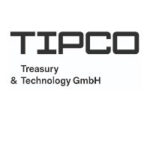 TIPCO Treasury & Technology GmbH
TIPCO Treasury & Technology GmbH
[button url=”https://www.treasuryxl.com/community/companies/tipco-treasury-technology-gmbh/” text=”View company profile” size=”small” type=”primary” icon=”” external=”1″]
[separator type=”” size=”” icon=””]

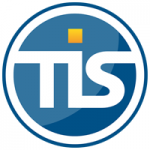 The DACT (Dutch association of Corporate Treasurers) will be holding their annual Treasury Fair in Noordwijk at the Hotel van Orange on 23rd and 24th November 2017 – the most important annual treasury event in the Netherlands. Discover treasury best practices, learn about the latest trends and exchange experiences. It will contain 9 practical workshops spread out throughout the day on topics including, among others, trade finance, supply chain finance, liquidity forecasting, cyber security and the Blockchain. There are more than 50 exhibitors present at the Trade Fair including Treasury Intelligence Solutions GmbH- a partner of treasuryXL.
The DACT (Dutch association of Corporate Treasurers) will be holding their annual Treasury Fair in Noordwijk at the Hotel van Orange on 23rd and 24th November 2017 – the most important annual treasury event in the Netherlands. Discover treasury best practices, learn about the latest trends and exchange experiences. It will contain 9 practical workshops spread out throughout the day on topics including, among others, trade finance, supply chain finance, liquidity forecasting, cyber security and the Blockchain. There are more than 50 exhibitors present at the Trade Fair including Treasury Intelligence Solutions GmbH- a partner of treasuryXL.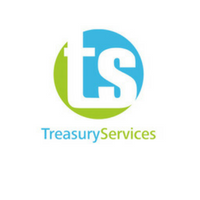 The DACT (Dutch association of Corporate Treasurers) will be holding their annual Treasury Fair in Noordwijk at the Hotel van Orange on 23rd and 24th November 2017 – the most important annual treasury event in the Netherlands. Discover treasury best practices, learn about the latest trends and exchange experiences. It will contain 9 practical workshops spread out throughout the day on topics including, among others, trade finance, supply chain finance, liquidity forecasting, cyber security and the Blockchain. There are more than 50 exhibitors present at the Trade Fair including Treasury Services- a partner of treasuryXL.
The DACT (Dutch association of Corporate Treasurers) will be holding their annual Treasury Fair in Noordwijk at the Hotel van Orange on 23rd and 24th November 2017 – the most important annual treasury event in the Netherlands. Discover treasury best practices, learn about the latest trends and exchange experiences. It will contain 9 practical workshops spread out throughout the day on topics including, among others, trade finance, supply chain finance, liquidity forecasting, cyber security and the Blockchain. There are more than 50 exhibitors present at the Trade Fair including Treasury Services- a partner of treasuryXL. Na de vorming van de euro is het toezicht op financiële instellingen en markten geïnternationaliseerd. Hierbij is het logisch om een ‘level playing field’ binnen de eurozone te realiseren om reguleringsarbitrage te voorkomen.
Na de vorming van de euro is het toezicht op financiële instellingen en markten geïnternationaliseerd. Hierbij is het logisch om een ‘level playing field’ binnen de eurozone te realiseren om reguleringsarbitrage te voorkomen.
 Ontvang via treasuryXL korting op deze e-learning en/of de
Ontvang via treasuryXL korting op deze e-learning en/of de 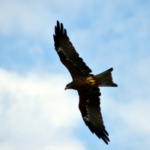 Zonder banken en financiële markten zou onze huidige economie en welvaart niet mogelijk zijn. En of u het nu leuk vindt of niet, banken waren en zijn onmisbaar voor onze moderne maatschappij. Iedereen doet, al dan niet bewust, dagelijks zaken met of via banken. Sinds de jaren ’80 heeft er een ongekende schaalvergroting plaatsgevonden in de financiële sector. Door deze schaalvergroting hebben banken zich ontwikkeld tot gigantische financiële supermarkten die een zeer uitgebreid aantal financiële diensten en producten aanbieden. Banken zijn tegenwoordig IT-bedrijven waar een grote groep specialisten werkt met beperkte financiële vakkennis.
Zonder banken en financiële markten zou onze huidige economie en welvaart niet mogelijk zijn. En of u het nu leuk vindt of niet, banken waren en zijn onmisbaar voor onze moderne maatschappij. Iedereen doet, al dan niet bewust, dagelijks zaken met of via banken. Sinds de jaren ’80 heeft er een ongekende schaalvergroting plaatsgevonden in de financiële sector. Door deze schaalvergroting hebben banken zich ontwikkeld tot gigantische financiële supermarkten die een zeer uitgebreid aantal financiële diensten en producten aanbieden. Banken zijn tegenwoordig IT-bedrijven waar een grote groep specialisten werkt met beperkte financiële vakkennis. TIS and 2FX Treasury organize a webinar that we would like to bring to your attention. On October 19th between 04:00 and 04:45 PM TIS and 2FX Treasury will host: Corporate Payments Optimization: How to reduce complexity in your business. An interesting session for treasury professionals.
TIS and 2FX Treasury organize a webinar that we would like to bring to your attention. On October 19th between 04:00 and 04:45 PM TIS and 2FX Treasury will host: Corporate Payments Optimization: How to reduce complexity in your business. An interesting session for treasury professionals.  When they hear e-invoicing, companies often think that this is sending invoices by e-mail. However, e-invoicing is more than that. Not only sending the invoice is part of this, but also the electronic booking, payment and collection of the money belongs to this process. Electronic invoicing leads to a major save of costs. For the sender, but especially for the receiver. Since e-invoicing is digitalizing invoicing for the sender as well as the receiver, a PDF-invoice is not seen as electronic invoicing.
When they hear e-invoicing, companies often think that this is sending invoices by e-mail. However, e-invoicing is more than that. Not only sending the invoice is part of this, but also the electronic booking, payment and collection of the money belongs to this process. Electronic invoicing leads to a major save of costs. For the sender, but especially for the receiver. Since e-invoicing is digitalizing invoicing for the sender as well as the receiver, a PDF-invoice is not seen as electronic invoicing.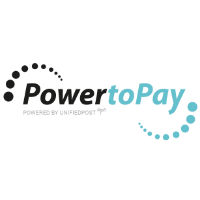
 Facturis
Facturis
 In July 2017 our expert Pieter de Kiewit wrote an interesting article about the minor treasury managment of
In July 2017 our expert Pieter de Kiewit wrote an interesting article about the minor treasury managment of 

